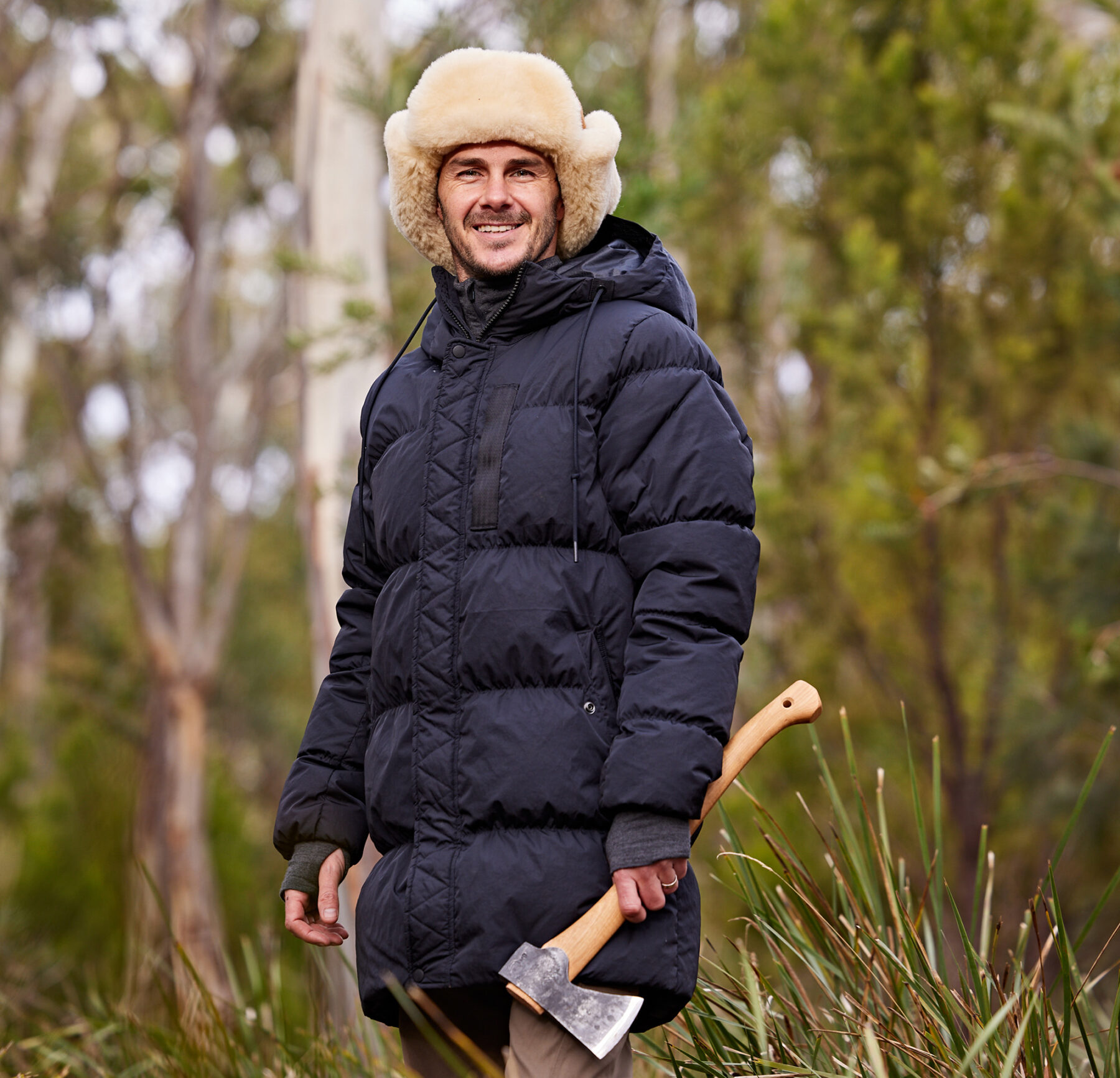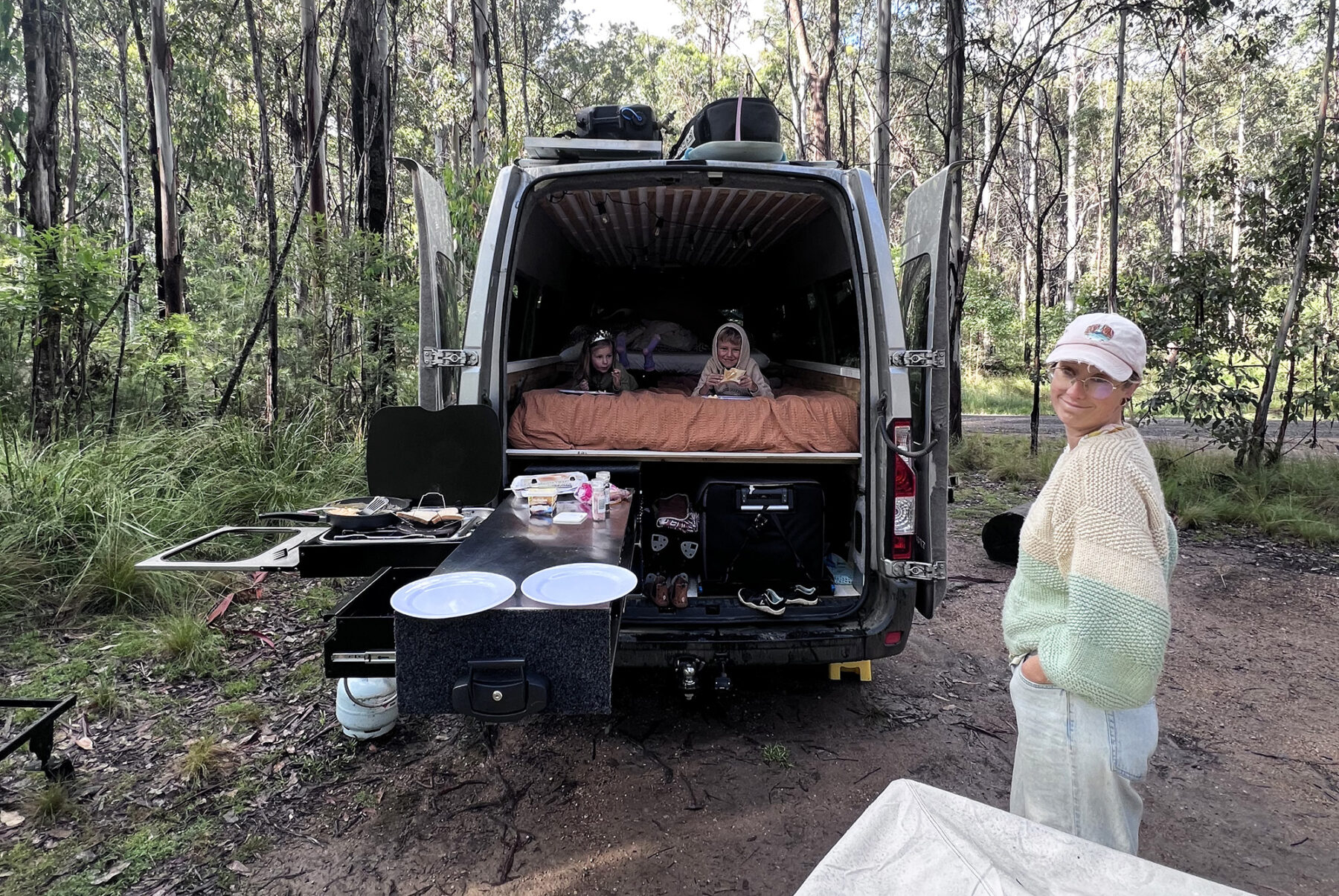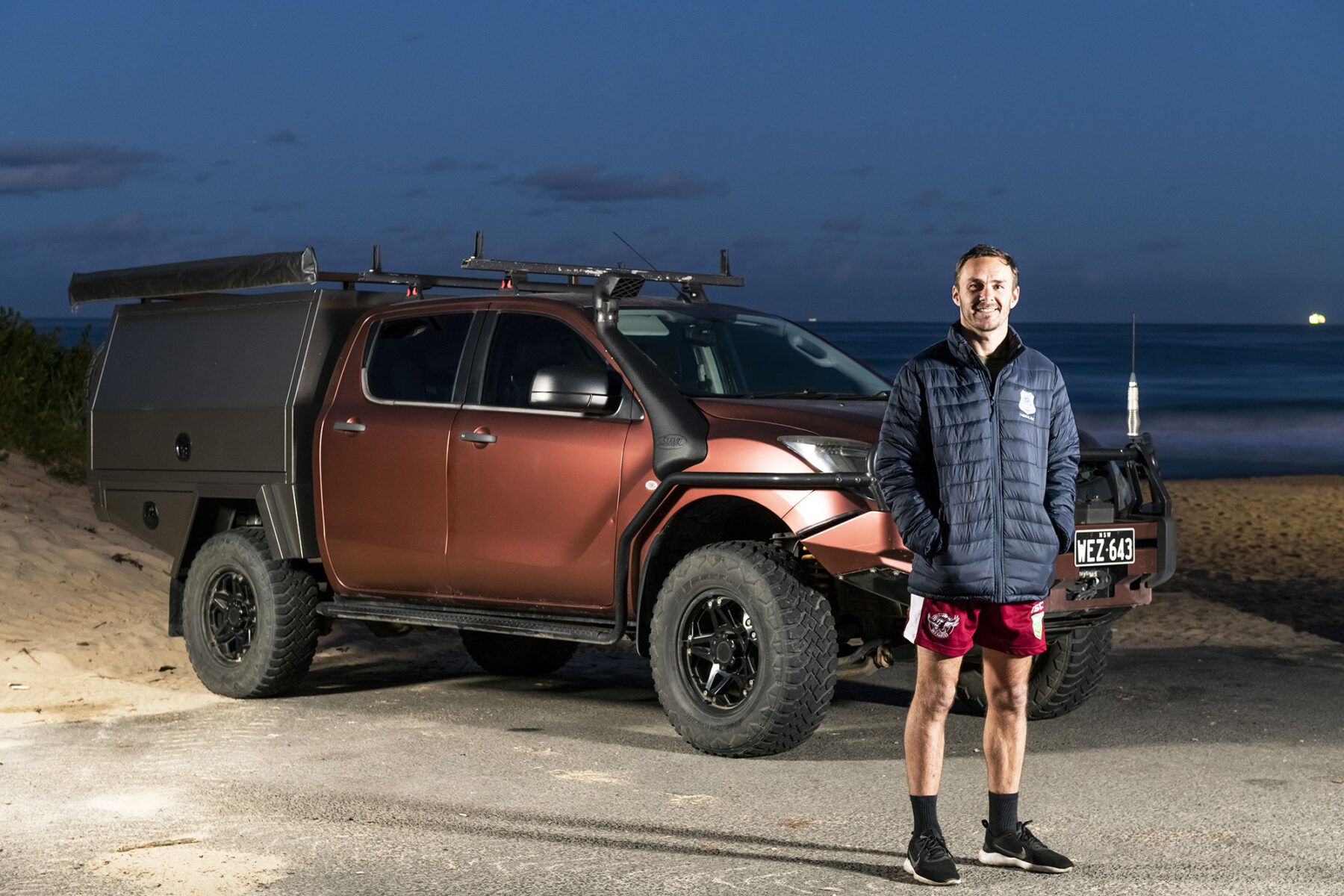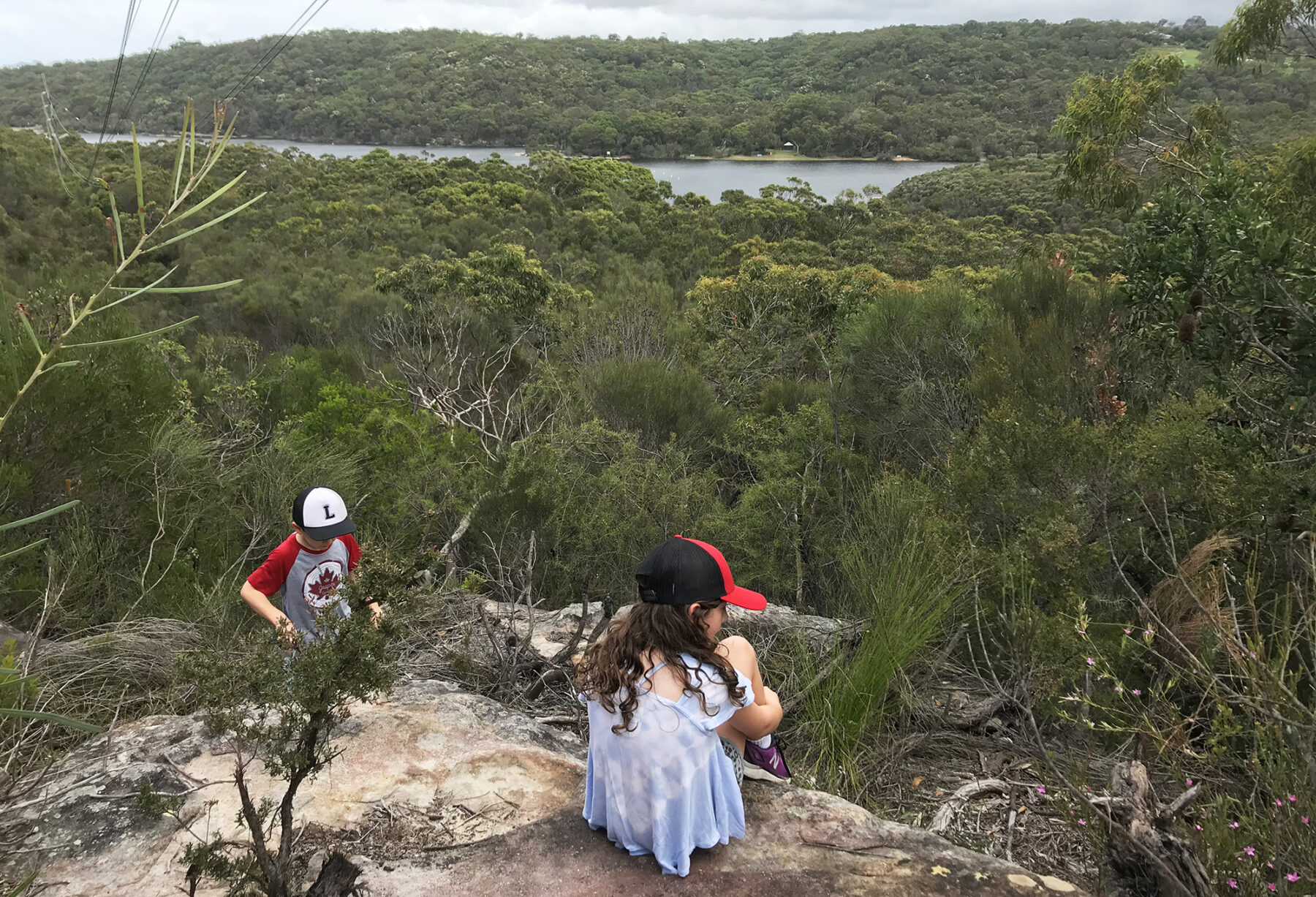Alone Australia’s Duane Byrnes talks adventure and environment

Duane Byrnes is an unassuming but instantly likeable bloke. This father of two is a Catchment Field Supervisor (Biosecurity) with WaterNSW, a junior rugby league coach with Thirroul Butchers and a respected member of NSW’s Indigenous community.
This proud First Nations man, with heritage from Wonnarua Gamilaroi living on Dharawal country, is also one of the stars of the inaugural season of the popular SBS series, Alone Australia, available to view now on SBS On Demand.

Duane was one of 10 participants in Alone Australia season one, an unscripted reality TV show which transported bush-survival experts to a remote part of Tasmania and left them there, in separate locations, to fend for themselves. They were allowed to take 10 items of their own choosing with them, and they only had their camera gear for company.
The incentive to take on this brutal challenge in a bitterly cold climate and having to source your own food, water, and shelter? A $250,000 cash prize for the person who stays ‘Alone’ for the longest time.
That’s a tough ask for anyone, but early in the 11-part series, Duane established himself as a participant to watch: he set up an impressive camp and seemed to be well in control, but he was also candid in his on-the-spot descriptions of just how mentally and emotionally difficult the entire survival experiment was – something we armchair experts fail to understand.

Spoiler alert: What’s even more revealing about the character of the man is the classy way in which he chooses to end his time on the show – after 10 days alone in the wilderness.
Duane handled his exit from the show with dignity – citing his need to be with his family and to experience social interaction – and he departed the experiment having gained the respect of an enthralled nation. Duane kindly took time out of his hectic schedule to answer some of Australian Geographic Adventure’s questions.
Tell our readers a bit about yourself.
I like to think I’m a common kind of guy in this community. I’m a proud father of two who enjoys a wide variety of sports and is passionate about the environment, particularly native bushland restoration and Invasive species management. I would say this passion is also driven from my Indigenous descent where I feel we as humans are not separate from the environment, instead we are a part of it and it’s our responsibility to look after her. I’ve previously played for several soccer clubs across the region, but it’s only been over the last four years where I have more involvement with communities.
I’m currently one of the Under-7s coaches for Thirroul Butchers (Illawarra), I play a role in the organisation for the Appin Massacre Memorial service each year and in my current leadership role with WaterNSW I engage with Local Aboriginal Land Councils and other agencies across a variety of spaces including cultural heritage, bushfire management and biosecurity.
How was your time on the first season of Alone Australia?
It’s a hard one to explain but it truly was a special time in that I think I will draw upon certain aspects from it for the rest of my life. In short, I felt physically fine in my capabilities to keep going, even if that meant eating fish raw (it was so tasty!). I knew the kind of driven people I was up against and there’s only one winner, right? Mentally, I felt like I didn’t have it in me to try and go the distance of what it would take to win, regardless of money. So instead, I created good memories and left when I wanted to.
What was the most difficult aspect of your time on Alone Australia?
To be really honest, I love a competition and am fairly driven myself so I would say I went into the show quiet egocentric so when I started to break down mentally it was challenging for me to accept that I simply just couldn’t go on and that life-changing prize wasn’t mine. It made me appreciate so much more about life and my Aboriginal heritage but to give you the most difficult aspect was solely the mental state that loneliness gives you. I was simply craving to be with someone, anyone! To share the experience with, physical presence, talking, learning, love, just all-round humanity is what I think I undervalued a little before I went into that experience but appreciate so so much more coming out of the show, so what was my most difficult aspect was actually my most life changing so I just love that!

Do you go out bush with your family?
We do so much but we don’t always plan our adventures, they can be so spontaneous which is so cool. We can be driving somewhere and my wife can be observing a map and picking out possible places to go and visit so we will just make it work and get there, even if that means us being a little under prepared and with next to no essential items, kind of like Alone now I think of it – ha-ha. There’s so many beautiful places to visit across this country of ours but standouts would be the Blue Mountains, Tasmania/lutruwita, mid north coast, NSW but truly you can find something special about every place you visit.
What vehicle are you driving on your family’s outdoor adventures these days?
I’m currently driving a 2017 long-wheelbase (LWB) Renault Master. It’s kitted out for all we need to get away in. It’s not 4×4, but it still goes pretty good on the dirt roads here and there. I chose this vehicle for a few reasons.
We wanted more space than what we previously owned which was a Mazda BT-50 ute*; we didn’t want to tow our caravan around with us and we also still wanted to use our little tinnie, so the ‘van-life’ seemed like the way to go and, so far, no regrets at all. It’s so functional and spacious. (*At time of writing Duane had owned the 2012 3.2-litre turbo-diesel Mazda BT-50 you see in the accompanying image for seven years. The ute had been a show car for a Penrith 4WD shop so it was already fitted with a bullbar, snorkel and rock sliders when he bought it but Duane added a vinyl wrap, the rear canopy (with fridge and cooktop), as well as a rooftop boat and slide bar. In it, he’d travelled to the Snowy Mountains, the far south coast, Dubbo, the back of the Blue Mountains, and “the mid north coast which we love”.)

Duane’s top three tips for family adventures
1. Just go. Look for a spot on a map or on social media or word of mouth from a friend. The old saying: you never know, if you never go. And when you do go, take a minute or two to stop and soak in where you are. We have such a privilege living in this sacred, ancient landscape of ours. Appreciate it and look after it like many people have long, long before us. Do that and you’ll have the best adventures ever.
2. This might sound a little too cautious but remember we do actually have some dangerous fauna, slippery rocks, large trees with limbs can snap, that we live along with. If there’s signs, obey them and get a lesson with the kiddies on how to treat a snake bite. After all, it might just save your lives so you can keep on adventuring.
3. Pack light but pack smart. You don’t need every piece of clothing from yours or the kids’ cupboard, you’ll find yourself wearing the same items a fair bit, so just wash and rotate them. Instead, use the space to pack items that are more useful like decent raincoats, one toasty jacket that you know is very warm, and pack things like sunscreen, insect repellents if you choose to use them and a GPS if you really want to go off the beaten track. They are great at logging where you have started and to trace your tracks for if you ever do get lost – just backtrack along the route you started.

Three Indigenous bush-survival skills everyone should know
1. Get to know a few common plants that you would find in each vegetation community across the country. Understand their uses but make sure you can correctly identify them before you eat them and only harvest what you need, make sure not to harm the plant.
2. Avid fishermen and -women would understand this; us mob call it reading water country. Different species of fish live in different parts of a body of water and in different water columns, they even become more active to eat at different barometric pressures. Learn to understand this and you will have more success at fishing.
3. This is not so much a survival tip for the way the majority of us live today, but it’s something I like to do when I do go bush and that’s to go slow, see and hear more. Don’t rush to get to the end of a track where a pretty waterfall might be, take it easy, walk slower and get yourself and the kids to listen. If you look and listen deeply enough, you will see more.





